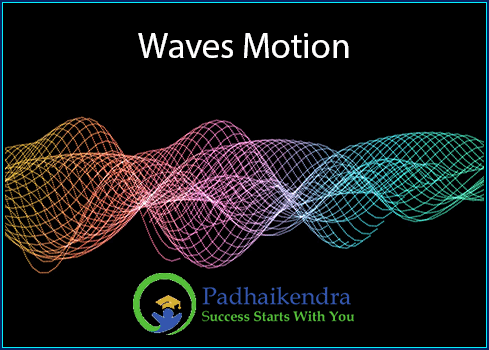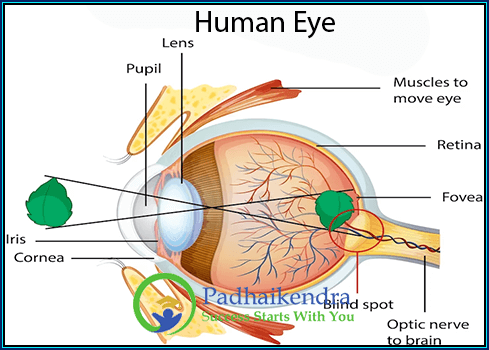Wave Motion refers to the transfer of energy through a medium by the propagation of disturbances or oscillations in the medium. Waves can be classified into two broad categories: mechanical waves and electromagnetic waves.
Mechanical waves
 Mechanical waves require a medium in order to propagate, and include waves such as sound waves, water waves, and seismic waves. These waves involve the transfer of energy through the mechanical deformation or displacement of the medium, and their properties depend on the characteristics of the medium, such as its density, elasticity, and viscosity.
Mechanical waves require a medium in order to propagate, and include waves such as sound waves, water waves, and seismic waves. These waves involve the transfer of energy through the mechanical deformation or displacement of the medium, and their properties depend on the characteristics of the medium, such as its density, elasticity, and viscosity.
Electromagnetic waves
 Electromagnetic waves, on the other hand, do not require a medium and can propagate through empty space, and include waves such as light, radio waves, and X-rays. These waves involve the oscillation of electric and magnetic fields, and their properties depend on the speed of light in a vacuum, which is a fundamental constant of nature.
Electromagnetic waves, on the other hand, do not require a medium and can propagate through empty space, and include waves such as light, radio waves, and X-rays. These waves involve the oscillation of electric and magnetic fields, and their properties depend on the speed of light in a vacuum, which is a fundamental constant of nature.
Waves can be characterized by various properties, including their amplitude (the maximum displacement or disturbance from the equilibrium position), wavelength (the distance between two consecutive points that are in phase with each other), frequency (the number of complete cycles per unit time), and velocity (the speed at which the wave propagates through the medium).
Wave Motion FAQs
Wave motion refers to the transfer of energy through oscillations or vibrations in a medium. It involves the propagation of a disturbance or wave through space, without the physical displacement of the medium itself.
There are two main types of waves: mechanical waves and electromagnetic waves. Mechanical waves require a medium to propagate, such as sound waves or water waves. Electromagnetic waves, on the other hand, can propagate through a vacuum and include light waves, radio waves, and X-rays.
Waves have several characteristics, including amplitude, wavelength, frequency, and speed. The amplitude represents the maximum displacement of the wave from its equilibrium position, while the wavelength is the distance between two consecutive points in phase. Frequency refers to the number of wave cycles per unit of time, and speed is the rate at which the wave travels through the medium.
Waves are generated by a source that imparts energy or disturbance to the medium. For example, when a stone is dropped into a calm pond, it creates ripples or waves that spread outwards. Similarly, sound waves are generated by vibrations of a source, such as a vibrating string or a speaker cone.
Waves propagate through the transfer of energy from one particle to the next in a medium. In a transverse wave, particles vibrate perpendicular to the direction of wave propagation, while in a longitudinal wave, particles vibrate parallel to the direction of wave propagation. This transfer of energy allows the wave to travel through the medium.
In a longitudinal wave, particles in the medium vibrate parallel to the direction of wave propagation. Examples include sound waves and seismic waves. In contrast, in a transverse wave, particles vibrate perpendicular to the direction of wave propagation. Examples of transverse waves include light waves and water waves.
Wave interference occurs when two or more waves meet in the same medium. Depending on the phase relationship between the waves, interference can result in constructive interference, where the amplitudes add up and create a larger wave, or destructive interference, where the amplitudes cancel out and create a smaller or no wave at all.
The principle of superposition states that when two or more waves meet at a point in a medium, the resultant displacement at that point is the algebraic sum of the individual displacements caused by each wave. This principle is essential for understanding wave interference.
Reflection occurs when a wave encounters a boundary or obstacle and bounces back, changing its direction. Refraction occurs when a wave passes from one medium to another and changes direction due to a change in its speed. Both reflection and refraction play significant roles in the behavior of waves.
Wave motion has numerous practical applications. It is used in communication systems, such as radio and television broadcasting, as well as in telecommunications and wireless technology. Waves are also utilized in medical imaging techniques, such as ultrasound and MRI, and play a crucial role in fields like seismology and oceanography. Additionally, the study of wave motion is fundamental in understanding phenomena like sound, light, and energy transfer.
 Mechanical waves require a medium in order to propagate, and include waves such as sound waves, water waves, and seismic waves. These waves involve the transfer of energy through the mechanical deformation or displacement of the medium, and their properties depend on the characteristics of the medium, such as its density, elasticity, and viscosity.
Mechanical waves require a medium in order to propagate, and include waves such as sound waves, water waves, and seismic waves. These waves involve the transfer of energy through the mechanical deformation or displacement of the medium, and their properties depend on the characteristics of the medium, such as its density, elasticity, and viscosity. Electromagnetic waves, on the other hand, do not require a medium and can propagate through empty space, and include waves such as light, radio waves, and X-rays. These waves involve the oscillation of electric and magnetic fields, and their properties depend on the speed of light in a vacuum, which is a fundamental constant of nature.
Electromagnetic waves, on the other hand, do not require a medium and can propagate through empty space, and include waves such as light, radio waves, and X-rays. These waves involve the oscillation of electric and magnetic fields, and their properties depend on the speed of light in a vacuum, which is a fundamental constant of nature.




